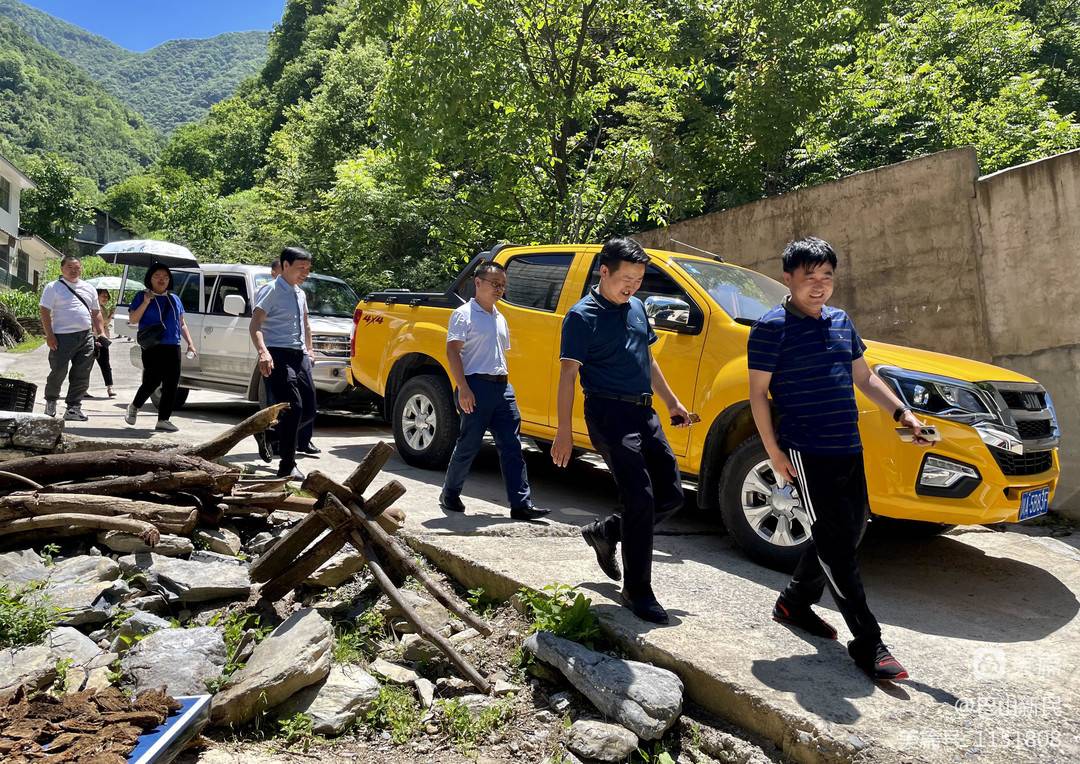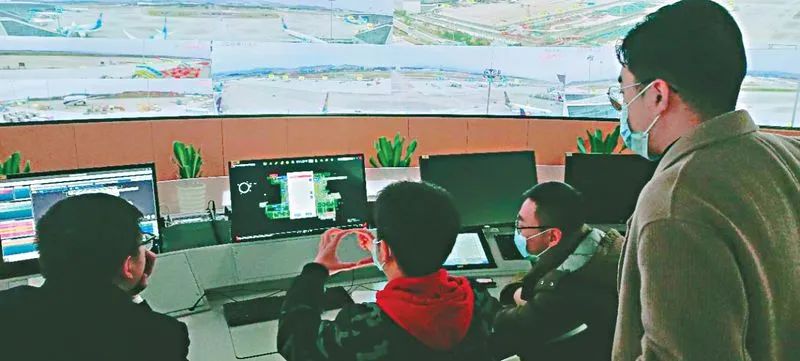Ask the sky cabin, how the plant grows up
Author:Guangming Daily Time:2022.08.31
Ask the sky cabin, how the plant grows up
—— Scientists Decrypt the growth experiment of Chinese space station asks in the experimental compartment plant growth experiment
The seeds of plants can germinate, grow, and bloom in space, and then produce seeds? In the space station asks in the sky experimental cabin, an interesting plant growth experiment is ongoing.
Since the installation of the experimental unit on July 28, the experiment was launched through the instructions of the ground program injection on July 29. Since one month, the naman mustard and rice seeds launched with the cabin have germinated under micro -gravity conditions. At present, the growth status is good. Essence
"Multi -mustard seedlings have grown multiple leaves, high -straw rice seedlings have grown to about 30 cm high, and low -straw rice is also 5 ~ 6 cm high." On August 29th, in the Chinese Academy of Sciences in Shanghai In the innovation center, the reporter saw a research team that undertake this experiment. Researcher Zheng Huiqiong, the person in charge of the team and the Molecular Plant Excellence Center, told reporters that the whole life cycle training experiments of "from seeds to seeds" under the world's first space micro -gravity conditions are expected to be completed in the near future.
Why do you go to the sky to do plant experiments
Plant growth experiments in the space environment, which started more than 60 years ago. Since the launch of the first artificial earth satellite in the 1950s, how to use plants to ensure the food, oxygen and pure water required for human survival in the outside world, it has become one of the most concerned issues of space life science.
Scientists expect to study how to cultivate or cultivate plants under the condition of completely closed space conditions, explore the conditions and technical channels required for efficient production in the space environment, and screen and create new crop species suitable for space production to establish a plant with plants Basic space biological regeneration life support system, ultimately achieve the goal of long -term space exploration of human beings.
"Dynamic and plant and humans enter the environment of space and lose weight, and various' aerospace syndrome" will occur, such as slow exercise, chaotic direction, late flowering, slow growing, living long ... Therefore, understanding and clarifying that gravity is in biological life activities in biological life activities The mechanism of action is necessary and important. It is the basic problem that the manned space project needs to be solved. "Zheng Huiqiong told reporters that in the past 60 years, scientists have conducted a lot of research on space planting and cultivation plants, in various space aircraft in various space aircraft More than 20 plants were conducted in the training experiments.
In the early days, the main goal of the space plant training experiment was to explore how to feed plants in the space environment. Some basic space plant biological problems, such as the growth of plants, the formation of root, germination, seed components, genes and protein expression changes. Wait, this process has been studied in depth. Han Bin, an academician of the Chinese Academy of Sciences, director of the Molecular Plant Excellence Center, introduced that at the moment, the research focus of scientists has gradually expanded from the research on plant seedlings to seed production research. However, only a few crops such as rapeseed, wheat and peas have completed the experiment of "from seeds to seeds" in space. At the same time, under the conditions of space, problems such as delayed flowering time, low number of flowers, low seeds of seeds, and decreased seed quality are still not overcome.
“'开花'是植物结出新一代种子的前提。农作物的种子既是粮食,也是繁殖下一代的载体。因此,迫切需要研究如何控制植物发育的关键环节,也就是'开花'的调控机理,为Improve space plant cultivation technology and explore more grain crops to provide guidance for the production requirements of space life protection. "Han Bin said.
He emphasized that because the life of the earth cannot survive without protective land under the conditions of severe space environment, future space crop production must be carried out in a fully closed artificial environment, and planting space and energy supply must be limited. In particular, the environment with a micro -gravity of the space will cause huge changes in crop growth form development and genetic regulation. "It is necessary to study the growth law of space crops, further cultivate high -quality and high -quality crop varieties suitable for space planting, and serve the demand for food guarantee for long -term space exploration of human beings." Han Bin said, "At the same time, under the unique micro -gravity and radiation environment The obtained plant growth and development data and the theory formed can also provide new support and inspiration for ground crop breeding and production. "
How to do the plant growth experiments in the sky
On July 24, the space station asked the Tianjin experimental cabin to be launched successfully and was connected with the Tianhe Core Card. Qi Tian's experimental cabin is equipped with scientific experimental cabinets such as life ecological experimental cabinets and biotechnology experimental cabinets.
On July 28, experimental units containing experimental samples and rice seeds were installed in a life -oriented experimental module of life ecological ecology that asked about the experimental compartment. The next day, the first liquid injection was completed and the experiment began. This is also the first experimental cabinet in the experimental compartment.
Zhao Liping, a researcher at the Space Application Center of the Chinese Academy of Sciences and the manned space engineering space application system, told reporters that under the condition of spatial micro -gravity, the experiment was performed by regulating the optical cycle. Starting from August 5th, the lighting cycle of the 12 -hour opening and 12 -hour level of rice is implemented, and the lighting cycle of 16 -hour opening and 8 -hour levels is implemented in Arabina mustard. According to the requirements of the research team, the temperature, humidity, and light control are normal. Essence
Zheng Huiqiong introduced that this project focuses on "molecular mechanism for high -level plants under the condition of micro -gravity". The selected space experimental sample -Arabili mustard and rice, which are two types of plants. Among them, Arabishaki represents Gemini, long days, and cross flower plants, and many vegetables, such as vegetables, rapeseeds, etc. belong to the family. The rice represents the leaf leaves, short -day, and grasses, and many grain crops, such as wheat and corn, belong to the grace. It can be seen from the image returned from the space station that the natal mustard and rice seeds in the cabin are germinated normally, and it has entered the stage of seedling growth. Zheng Huiqiong said that it is interesting that leaving the earth's gravity, the growth of rice leaves at first showed a spiral shape. Right now, the high stalk rice reaches about 30 cm high, and it looks soft, as "osteoporosis", and the leaves of the low stalk rice are "lying" on the wall of the experimental unit. However, the overall development process is in line with expectations. It is expected that for the first time in the world to set up seeds in space, and complete the "from seeds to seeds" full life cycle experiment under the condition of micro -gravity. Some Arabia must have begun to draw.
"The information disclosed by the image is still very incomplete. In the next step, we will analyze quantitative statistical analysis of the growth behavior of plants." Zheng Huiqiong told reporters that the growth cycle of rice seeds selected this time is short. Seeds may take a longer time in space, and seeds are expected to make seedlings for two to three months. During the experiment, the seed samples will be collected by the astronauts, and the frozen preservation will be used to return to the ground with the astronauts. Earlier, only two rice seed germination experiments were performed in the international environment. The rice cultivated by the Zheng Huiqiong team in the "Tiangong II" laboratory was not so high.
"From seeds to seeds", what can be revealed
Complete the whole life cycle training experiments of "from seeds to seeds" under the condition of space micro -gravity, focusing on three key scientific issues: how can micro -gravity affect flowering? What is the molecular mechanism that affects the flowering of plants? Can it be used to control the flowering of plants with a micro -gravity environment? Focusing on these three key scientific issues, by analyzing the role of comparative gravity in the process of plant flowering, you can obtain the expression and changes in the molecular foundation and key genes of micro -gravity regulating flowering flowers, further analyzes the long sun and short sunlight under the condition of micro -gravity in the space. The regulatory network of plant flowering genes, as well as the mechanism of the two plants in the adaptability of the plant to the space environment.
"On this basis, we can get the key environmental parameters of rice space cultivation, which provides important theoretical guidance for further analysis of the impact of micro -gravity of space on rice growth and molecular basis, and use rice to provide important theoretical guidance." Zheng Huiqiong said.
Next, through astronauts gather samples in rails, frozen preservation returns to analysis, scientists can reveal the flowering regulating molecular network and key hub genes that can be adapted to the space environment, and verify them to build a micro -gravity environment for the next step. High -yield and high -quality crops provide molecular components.
The Arabia mustard and rice seeds brought back by the astronauts will have the opportunity to continue to the space station in the future and reproduce two to three generations in space. "In the future, a new concept may be formed, driving the new development of the research on the development of micro -gravity plant development, and laid the theoretical foundation for future space vegetables and grain production." Han Bin said. (Reporter Yan Weiqi)
[Editor in charge: Wang Xue]
![]()
- END -
Nearly 200 people in Sichuan Wanyuan's communication cover news reports help the problem to solve the problem in time

Luo Xuan, Luo Xingming, Luo Xuan, Luo XuanPhoto Conferring in the Party and Govern...
Smart Empowerment | Baiyun Airport ACIS system allows the apron to jointly run "what you see is"

Recently, Guangzhou Baiyun International Airport has made new progress in the cons...